Hyundai IONIQ 5 vs Renault Scénic – Vilken bil är det bättre valet?
Två bilar, en duell: Hyundai IONIQ 5 möter Renault Scénic.
Vem imponerar mest när det gäller prestanda, förbrukning och prisvärde? Ta reda på det nu!
Hyundai IONIQ 5 vs Renault Scénic: A Comprehensive Comparison
In the increasingly competitive electric vehicle market, the Hyundai IONIQ 5 and the Renault Scénic emerge as front-runners, each offering unique features to attract buyers. As both brands push the envelope in innovation, consumers face the challenge of choosing between these two remarkable contenders. This article delves into the technical specifications and innovations that define each vehicle, helping you make an informed decision.
Power and Performance
The Hyundai IONIQ 5 boasts an impressive power range, offering options of 170 HP up to a roaring 609 HP in its top performance variant. The IONIQ 5 is available in both rear-wheel drive and all-wheel drive configurations, providing versatility depending on user preference and driving conditions. In terms of acceleration, the car can sprint from 0 to 100 km/h in as fast as 3.5 seconds for the high-end version. This performance is backed by a robust torque delivery of up to 740 Nm, ensuring a thrilling driving experience.
On the other hand, the Renault Scénic, with its power options peaking at 220 HP, remains competitive but slightly lags behind in horsepower. With its single front-wheel drive layout, the Scénic offers a more traditional driving feel. The Scénic achieves 0 to 100 km/h in a respectable 7.9 seconds, which is commendable for a family SUV but still a step behind the IONIQ 5's ultimate performance.
Battery and Range
Charging ahead in the battery department, the IONIQ 5 features a choice between 63 kWh and 84 kWh battery capacities. This allows the vehicle to achieve an impressive electric range of up to 570 km, making it suitable for long journeys without frequent recharging. The IONIQ 5's consumption rates vary between 15.6 kWh/100 km and 21.2 kWh/100 km, depending on the variant, offering an economical alternative in the electrified segment.
The Renault Scénic, while still offering robust performance, has a slightly lower range, with figures reaching up to 598 km on a full charge from its larger battery. Its consumption rates range from 16.7 kWh/100 km to 17.6 kWh/100 km. These numbers indicate efficiency but show room for improvement compared to its Hyundai counterpart. However, the Scénic’s battery performance matches the needs of consumers looking for a practical family SUV.
Interior Space and Comfort
Both vehicles provide ample interior space for five passengers, yet their dimensions and trunk capacity differ. The IONIQ 5 measures 4655 mm in length with a trunk capacity of 520 liters, while the Scénic, measuring 4470 mm in length, offers slightly more trunk space at 545 liters. Comfort is paramount in the family-oriented segment, and the Scénic's superior trunk space may cater to families needing to carry extra luggage or cargo.
Technological Innovations
Hyundai has outfitted the IONIQ 5 with cutting-edge technology, including advanced driver-assistance systems and an intuitive infotainment interface. The vehicle features over-the-air updates, allowing it to evolve continuously post-purchase. The IONIQ 5 also incorporates various safety features such as adaptive cruise control and lane-keeping assist, making it a frontrunner in the tech-savvy market.
The Renault Scénic, while also equipped with modern technology, offers a slightly different focus. It emphasizes comfort and practicality, with an easy-to-use infotainment system. Safety features are robust as well, but the emphasis is more on usability rather than performance metrics. Both vehicles excel in their respective areas, but the IONIQ 5 takes the lead regarding sheer technological advancements.
Conclusion: Choosing Your Ideal EV
In the battle between the Hyundai IONIQ 5 and the Renault Scénic, each offers distinct advantages that cater to different consumer preferences. The IONIQ 5 stands out for its performance, cutting-edge technology, and impressive range, making it an ideal choice for those who value speed and innovation. Conversely, the Scénic, with its spacious interior and family-friendly design, appeals to those prioritizing practicality and comfort.
Ultimately, your choice will hinge on what aspects matter most to you. Whether you prioritize performance, space, or technology, both vehicles represent the shift towards an electrified future in the automotive industry.
Nu blir det konkret: de tekniska skillnaderna i detalj
Kostnader och förbrukning: Pris och effektivitet är avgörande faktorer vid köp – och just här visar sig ofta de största skillnaderna.
Renault Scénic har ett i liten grad prisförsprång – den börjar på 466800 kr, medan Hyundai IONIQ 5 kostar 518800 kr. Skillnaden är ungefär 51996 kr.
När det gäller elförbrukning har Hyundai IONIQ 5 fördelen: Med 15.60 kWh per 100 km är den lätt effektivare än Renault Scénic, som drar 16.60 kWh. Skillnaden är ungefär 1 kWh.
När det gäller räckvidd presterar Renault Scénic knappt märkbar bättre: Den klarar upp till 598 km, ungefär 28 km mer än Hyundai IONIQ 5.
Motor och prestanda: Under huven avslöjas vilken modell som är sportigare och vem som är snabbast iväg.
När det gäller motoreffekt har Hyundai IONIQ 5 ett klart övertag – 650 hk mot 218 hk. Det motsvarar ungefär 432 hk hk mer.
I accelerationen från 0 till 100 km/h är Hyundai IONIQ 5 betydligt snabbare – 3.50 s mot 7.90 s. Det är ungefär 4.40 s snabbare.
När det gäller toppfart ligger Hyundai IONIQ 5 klart synligt före – den når 260 km/h, medan Renault Scénic stannar vid 170 km/h. Skillnaden är omkring 90 km/h.
Även vridmomentet skiljer sig åt: Hyundai IONIQ 5 drar klart kraftigare med 770 Nm mot 300 Nm. Skillnaden är cirka 470 Nm.
Utrymme och praktisk användning: Utöver prestanda handlar det i vardagen om komfort och användbarhet. Här avgörs vilken bil som är mest praktisk.
Båda bilarna har plats för 5 personer.
När det gäller tjänstevikt är Renault Scénic nästan omärklig lättare – 1822 kg mot 1955 kg. Skillnaden är omkring 133 kg.
När det gäller bagageutrymme erbjuder Renault Scénic knappt märkbar mer plats – 545 L mot 520 L. Skillnaden är omkring 25 L.
Vid maximal lastvolym presterar Renault Scénic lätt bättre – upp till 1670 L, cirka 90 L mer än Hyundai IONIQ 5.
Även lastkapaciteten visar skillnad: Hyundai IONIQ 5 minimal bättre – 530 kg mot 518 kg. Skillnaden är ungefär 12 kg.
Sammantaget framstår Hyundai IONIQ 5 som överträffar i nästan alla aspekter och tar hem titeln som DriveDuel Champion.
Den övertygar med ett mer balanserat helhetspaket och är den mest mångsidiga i vardagen.
Hyundai IONIQ 5
IONIQ 5 har snabbt blivit en favorit bland elbilsentusiaster med sin stiliga design och imponerande räckvidd. Med sitt rymliga interiör och moderna bekvämligheter erbjuder bilen en exceptionell körupplevelse. Dessutom är den utrustad med smart teknologi som håller förare och passagerare uppkopplade och säkra på vägen.
detaljer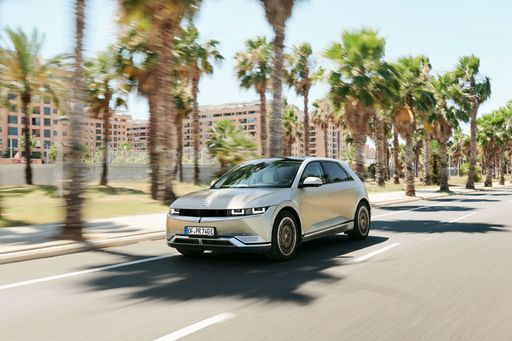 @ hyundai.news
@ hyundai.news
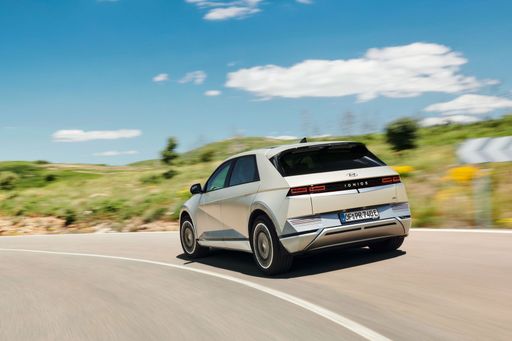 @ hyundai.news
@ hyundai.news
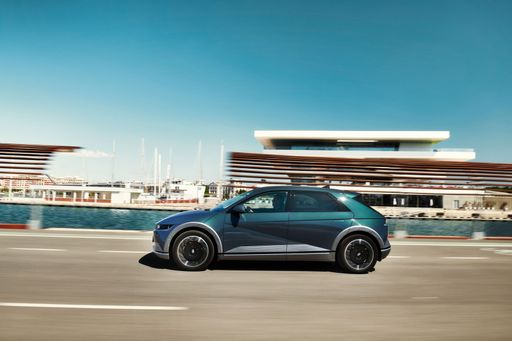 @ hyundai.news
@ hyundai.news
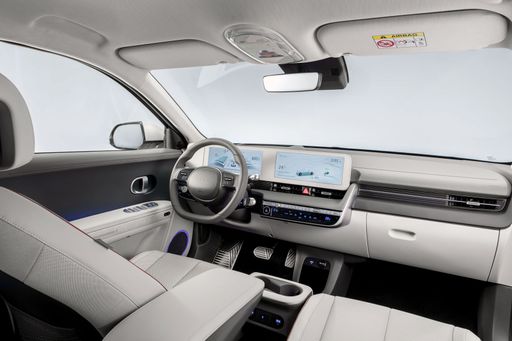 @ hyundai.news
@ hyundai.news
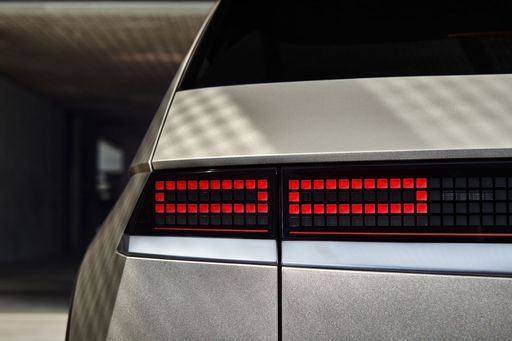 @ hyundai.news
@ hyundai.news
Renault Scénic
Renault Scénic fortsätter att imponera med sin rymliga och flexibla interiör, vilket gör den idealisk för familjer och äventyr. Dess stilrena design och moderna teknologi ger en bekväm körupplevelse, oavsett om du kör i stan eller på landsvägar. Med fokus på säkerhet och innovation är Scénic en bil som verkligen står ut i sitt segment.
detaljer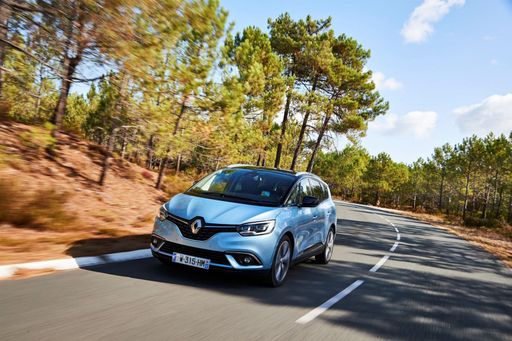 @ Renault
@ Renault
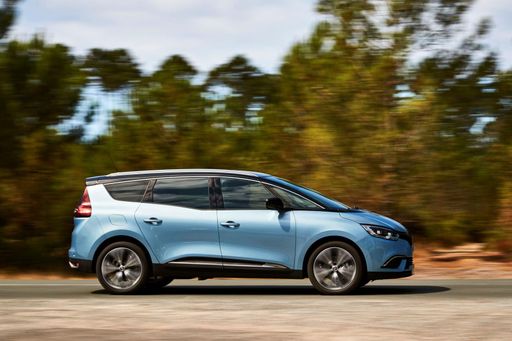 @ Renault
@ Renault
 @ Renault
@ Renault
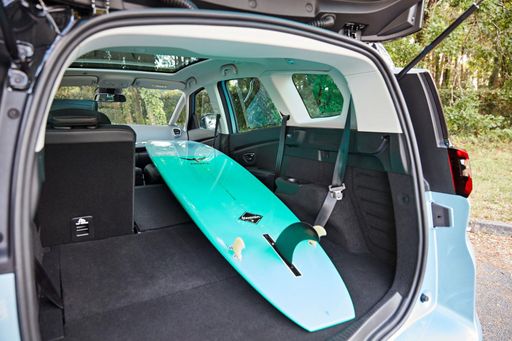 @ Renault
@ Renault
 @ Renault
@ Renault

|

|
|
|
|
Kostnader och förbrukning |
|
|---|---|
|
Pris
518800 - 865400 kr
|
Pris
466800 - 592800 kr
|
|
Förbrukning L/100 km
-
|
Förbrukning L/100 km
-
|
|
Förbrukning kWh/100 km
15.6 - 21.2 kWh
|
Förbrukning kWh/100 km
16.6 - 17.5 kWh
|
|
Elektrisk räckvidd
440 - 570 km
|
Elektrisk räckvidd
420 - 598 km
|
|
Batterikapacitet
63 - 84 kWh
|
Batterikapacitet
-
|
|
CO2
0 g/km
|
CO2
0 g/km
|
|
Tankvolym
-
|
Tankvolym
-
|
Mått och kaross |
|
|---|---|
|
Karosstyp
SUV
|
Karosstyp
SUV
|
|
Säten
5
|
Säten
5
|
|
Dörrar
5
|
Dörrar
5
|
|
Tjänstevikt
1955 - 2275 kg
|
Tjänstevikt
1822 - 1927 kg
|
|
Bagageutrymme
480 - 520 L
|
Bagageutrymme
545 L
|
|
Längd
4655 - 4715 mm
|
Längd
4470 mm
|
|
Bredd
1890 - 1940 mm
|
Bredd
1864 mm
|
|
Höjd
1585 - 1605 mm
|
Höjd
1571 mm
|
|
Max bagageutrymme
1540 - 1580 L
|
Max bagageutrymme
1670 L
|
|
Lastkapacitet
385 - 530 kg
|
Lastkapacitet
514 - 518 kg
|
Motor och prestanda |
|
|---|---|
|
Motortyp
El
|
Motortyp
El
|
|
Växellåda
Automatisk
|
Växellåda
Automatisk
|
|
Växellådsdetalj
Reduktionsväxellåda
|
Växellådsdetalj
Reduktionsväxellåda
|
|
Drivtyp
Bakhjulsdrift, Fyrhjulsdrift
|
Drivtyp
Framhjulsdrift
|
|
Effekt (hk)
170 - 650 hk
|
Effekt (hk)
170 - 218 hk
|
|
Acceleration 0-100 km/h
3.5 - 8.5 s
|
Acceleration 0-100 km/h
7.9 - 8.6 s
|
|
Maxhastighet
185 - 260 km/h
|
Maxhastighet
150 - 170 km/h
|
|
Vridmoment
350 - 770 Nm
|
Vridmoment
280 - 300 Nm
|
|
Antal cylindrar
-
|
Antal cylindrar
-
|
|
Effekt (kW)
125 - 478 kW
|
Effekt (kW)
125 - 160 kW
|
|
Motorvolym
-
|
Motorvolym
-
|
Allmänt |
|
|---|---|
|
Modellår
2024
|
Modellår
2025
|
|
CO2-effektivitetsklass
A
|
CO2-effektivitetsklass
A
|
|
Märke
Hyundai
|
Märke
Renault
|
Vilka drivlinor finns för Hyundai IONIQ 5?
Hyundai IONIQ 5 finns som Bakhjulsdrift eller Fyrhjulsdrift.
De visade priserna och uppgifterna är uppskattningar baserade på tyska listpriser och kan variera beroende på land. Denna information är inte juridiskt bindande.
